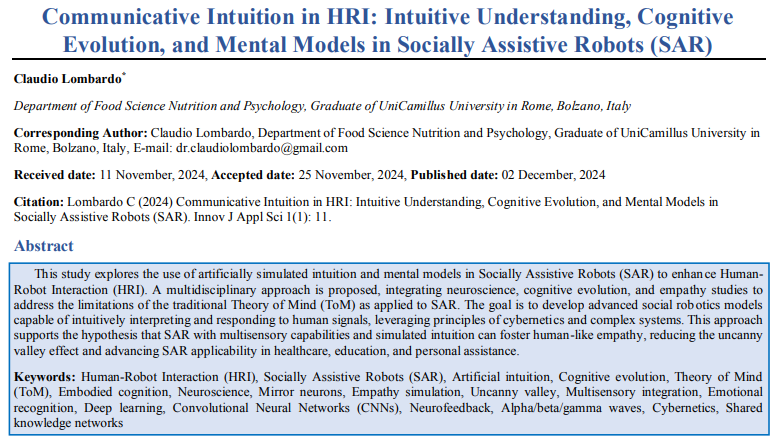Communicative Intuition in HRI: Intuitive Understanding, Cognitive Evolution, and Mental Models in Socially Assistive Robots (SAR)
DOI:
https://doi.org/10.70844/ijas.2024.1.11Keywords:
Human-Robot Interaction (HRI), Socially Assistive Robots (SAR), Artificial intuition, Cognitive evolution, Theory of Mind (ToM), Embodied cognition, Neuroscience, Mirror neurons, Empathy simulation, Uncanny valley, Multisensory integration, Emotional recognition, Deep learning, Convolutional Neural Networks (CNNs), Neurofeedback, Alpha/beta/gamma waves, Cybernetics, Shared knowledge networksAbstract
This study explores the use of artificially simulated intuition and mental models in Socially Assistive Robots (SAR) to enhance Human Robot Interaction (HRI). A multidisciplinary approach is proposed, integrating neuroscience, cognitive evolution, and empathy studies to address the limitations of the traditional Theory of Mind (ToM) as applied to SAR. The goal is to develop advanced social robotics models capable of intuitively interpreting and responding to human signals, leveraging principles of cybernetics and complex systems. This approach supports the hypothesis that SAR with multisensory capabilities and simulated intuition can foster human-like empathy, reducing the uncanny valley effect and advancing SAR applicability in healthcare, education, and personal assistance.

